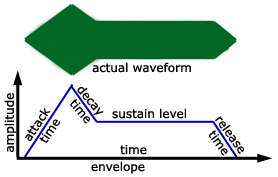Sound Bits
Sound bits are individual lesson plans that were conceived to be completed consecutively, but can be followed non-sequentially. What ties all these bits together is sound.Introduction to Sound
What is sound?Sound is a form of energy that is made when air molecules vibrate and move in a pattern called waves, or sound waves. When the molecules are pushed closer together it is called compression; when they are pulled apart, it is called rarefaction. The back and forth oscillation of pressure produces a sound waves.We hear sounds because our ears are sensitive to these waves. One of the easiest types of sound wave to understand is a short, sudden sound like a hand clap. When you clap your hands you create a pressurized wave of air which moves at about 340 meters per second (the speed of sound). When this wave reaches your ear, it pushes on your eardrum slightly, causing your ear drum to vibrate and allowing you to hear the clap.
Our eardrums act as receivers. When vibrating air reaches the eardrum, it causes the eardrum to vibrate as well. The eardrum then transmits the vibrations to tiny bones in the middle ear, and so on until they reach the inner ear where the oscillating pressures are converted into electrical signals and sent to the brain.
Sound waves are often characterized by four basic properties:
- frequency—The number of cycles per unit of time
- amplitude—height of wave
- shape—sine, square, sawtooth
The above wave form is a sinusoidal wave form. Noise is characterized as being aperiodic or having a non-repetitive pattern. There are many different types of noise, depending primarily on the random distribution of frequencies.
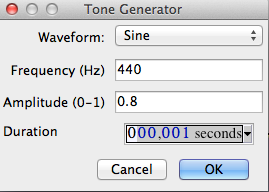
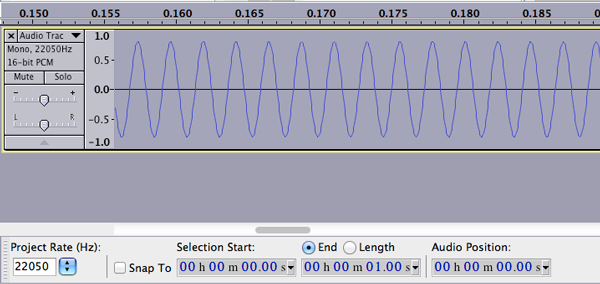
A square wave , or pulse wave is a non-sinusoidal waveform, in which the amplitude alternates at a steady frequency between fixed minimum and maximum values.
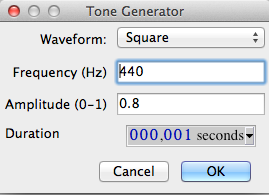
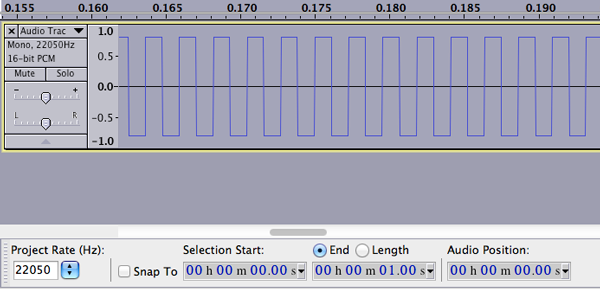
The number of cycles per unit of time is called the frequency. Frequency is most often measured in cycles per second (cps) or the Hertz (Hz) (60 cps = 60 Hz). 1000 Hz is often referred to as 1 kHz (kilohertz) or simply '1k'. We can hear frequencies between 20 to 20,000K Hz, although as we age, we are less able to hear the higher frequencies. Frequencies below 20Hz are referred to as sub-audio and above 20K Hz are ultrasonic.
Frequency is directly related to wavelength, which is represented by the Greek symbol lambda (λ). Wavelength is the distance in space required to complete a full cycle of a frequency. The wavelength of a sound is the inverse of its frequency. The formula is:
λ=speed of sound/frequency
A dynamic envelope refers to the amplitude change over time of a sound event. A note can have an initial attack characterized by the amount of time it takes to change from no sound to a maximum level, a decay phase, whereby the amplitude decreases to a steady-state sustain level, followed by a decay phase, characterized by the time it takes the amplitude to change from the sustain level to 0.


